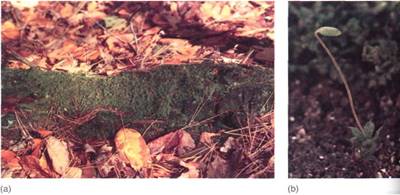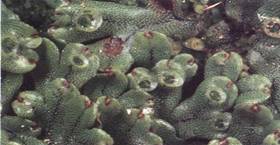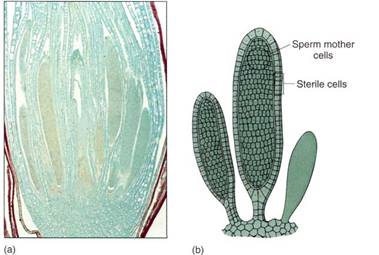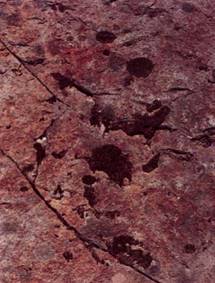


 النبات
النبات
 الحيوان
الحيوان
 الأحياء المجهرية
الأحياء المجهرية
 علم الأمراض
علم الأمراض
 التقانة الإحيائية
التقانة الإحيائية
 التقنية الحيوية المكروبية
التقنية الحيوية المكروبية
 التقنية الحياتية النانوية
التقنية الحياتية النانوية
 علم الأجنة
علم الأجنة
 الأحياء الجزيئي
الأحياء الجزيئي
 علم وظائف الأعضاء
علم وظائف الأعضاء
 الغدد
الغدد
 المضادات الحيوية
المضادات الحيوية|
Read More
Date: 15-11-2016
Date: 17-11-2016
Date: 15-11-2016
|
Introduction to Non-Vascular Plants
Most people have at least a vague concept of nonvascular plants because mosses are well known, and many people have heard of liverworts (Figs. 1 and 2). The third group, hornworts, is relatively unfamiliar, even to most botanists (Fig. 3). It is important to understand clearly what nonvascular plants are not: Spanish moss of the southeastern United States is the flowering plant Tillandsia usneoides of the pineapple family, not a true mas Club mosses are lycophytes (see Fig. 23.21), not mosses, and the slimy, bright green "mosses" of ponds and slow-moving streams are green algae, usually Spirogyra. Several types of lichens, especially Alectoria, Bryonia, Usnea, and "reindeer moss" are frequently mistakenly thought to be mosses or liverworts.

FIGURE 1 :(a) Although mosses occur m hot, arid areas, they are most abundant in cool, moist regions. (b) The most abundant green or gray-green moss plants are gametophytes; the small stalk and capsules you may have noticed are sporophytes. Mnium. (Barry L. Runh from Grant Heilman).

FIGURE 2:This is Marchantia, the most abundant greenhouse liverwort; unfortunately, it is one of the least typical. As in mosses, the large green plant is the gametophyte, not the sporophyte. The cup shaped structures contain clumps of cells that can be splashed out by rain and then grow into new plants. (Robert and Linda Mitchell).
For a more rigorous scientific definition, nonvascular plants are embryophytes (non-algal plants) that do not have vascular tissue. Being embryophytes, they have multicellular sporangia and gametangia: Reproductive cells are always surrounded by one or several layers of sterile cells (Figs. 4 and 5). The bodies of nonvascular plants are not composed of filaments as in many algae, but rather of true parenchyma derived by three dimensional growth from meristems. They are almost exclusively terrestrial and have a cuticle over much of their bodies. Many nonvascular plants have stomata (Fig. 6).

FIGURE 3:Hornworts such as this Anthoceros quite rare, and few people have ever seen them; they are easily confused with liverworts unless the tall "horns"—sporophytes—are present (Runk/Schoenberger from Grant Heilman.).

FIGURE 4:In non-algal plants, gametangia and sporangia always have an outermost layer of cells that do not become gametes or spores. In these microgametangia of Bryophyta, the sterile layer is only one cell thick, and each microgametangium produces numerous sperm cells (X 25). Compare with Figure 2, an algal gametangium.

FIGURE 5:Megagametangia of non-algal plants, such as these of a moss, also have a one-layered sterile jacket, but each produces only one egg, not four (X 25). (Robert and Linda Mitchell).

FIGURE 6:Most mosses have stomata on their sporophytes. Although the gametophytes are larger and more active in photosynthesis, they never have stomata. (Courtesy of F. Sack, Ohio State University, and D. Paolillo, Cornell University).
Most other features are less controversial. Nonvascular plants, like vascular plants, have a life cycle with an alternation of heteromorphic generations; as in Derbesia, the sporophyte and gametophyte differ from each other structurally. Recall that sporophytes in flowering plants are the large plants with leaves and roots, whereas the gametophytes are tiny and occur inside pollen grains and ovules . In nonvascular plants, the gametophyte is the larger, more prominent generation and the sporophyte is much smaller, more temporary, and often very inconspicuous. The gametophyte is perennial and photosynthetic; it collects mineral nutrients and typically can spread rapidly by asexual reproduction. Sporophytes are usually very small, and they absorb minerals only from the gametophytes. Sporophytes carry out so little photosynthesis that they could not support even their own respiration, not to mention growth and sporogenesis, without sugar imported from the gametophyte.
Nonvascular plants offer interesting contrasts to vascular plants, particularly flowering plants. The gametophyte, the haploid generation, is always the dominant phase of nonvascular plants, whereas the diploid or polyploid sporophyte is dominant in vascular plants. Is this difference related in any way to the differences in size and complexity of the two groups of organisms? In vascular plants and in animals, the presence of at least two genomes in every nucleus buffers the effects of mutations. A mutation that severely disrupts a gene for an essential protein or RNA is usually lethal in a haploid organism, but its effects may be masked by the presence of the unmutated, original allele on the homologous chromosome in a diploid organism. The mutant, useless allele is not immediately eliminated by natural selection. Rather it remains in the gene pool and mutates further, perhaps ultimately becoming a new gene that produces a beneficial product. If so, the species now has the original gene and its product plus the new gene and its product: The metabolism or structure of the species has become more complex. The haploid nature of the dominant generation in nonvascular plants may have made it more difficult for them to retain the extra DNA needed to develop new genes for a more elaborate body and biology. The sporophytes are diploid, but they may be limited in their size and complexity by the limited resources available to them from the gametophyte.
As an alternative, being small and simple may have great selective advantage. Many flowering plants have evolved into species with bodies only 1 or 2 cm tall with simple leaves and stems. These germinate, grow, and reproduce quickly in temporarily adequate environments or under low light. The tiny, non-elaborate bodies of mosses and liverworts arc actually superior to those of flowering plants in many microhabitats such as stone walls, fences, and bare rock (Fig. 7). Even in these environments, nonvascular plants face stiff competition from very simple vascular plants such as lycophytes with their diploid bodies .

FIGURE 7:Mosses outcompete vascular plants in certain severe habitats such as open rock faces, like this one on Mt. Rainier. However, even here the true champions of adaptation are usually lichens, the association of algae with fungi.



|
|
|
|
تفوقت في الاختبار على الجميع.. فاكهة "خارقة" في عالم التغذية
|
|
|
|
|
|
|
أمين عام أوبك: النفط الخام والغاز الطبيعي "هبة من الله"
|
|
|
|
|
|
|
قسم شؤون المعارف ينظم دورة عن آليات عمل الفهارس الفنية للموسوعات والكتب لملاكاته
|
|
|